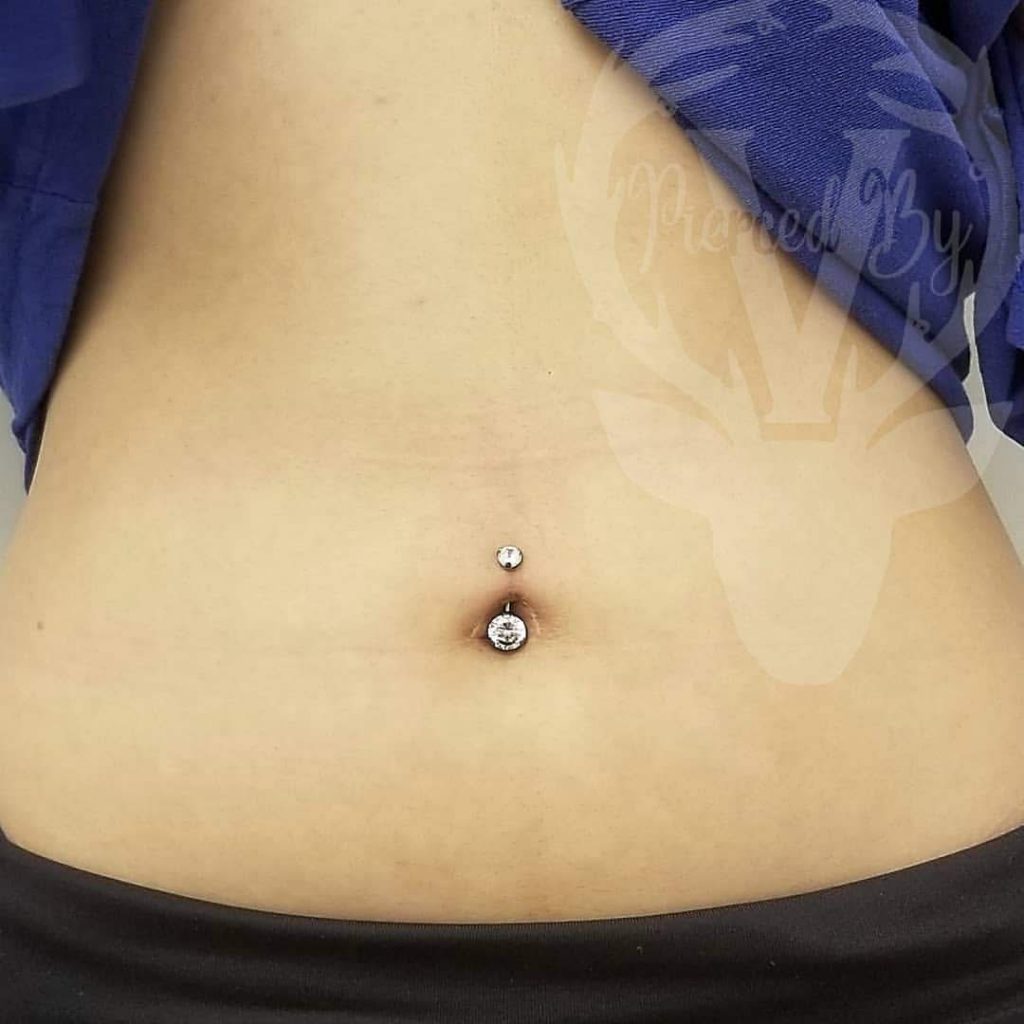Ever dreamed of a navel piercing that seems to float effortlessly on your skin? Floating navel piercings offer a modern twist on a classic, allowing customization and placement flexibility for various navel types. This comprehensive guide dives deep into everything you need to know about floating navel piercings, from finding the perfect piercer to ensuring proper aftercare and selecting stunning jewelry.
What Exactly Is a Floating Navel Piercing?
So, what sets a floating navel piercing apart? Unlike traditional navel piercings which go through the navel rim, floaters sit above the navel, anchored only through the skin. This creates the illusion of floating jewelry, making them a unique choice for those with deep or shallow navels. They’re typically done with a curved barbell or surface bar, specially designed to sit comfortably on the skin’s surface. This unique placement offers more styling options than a standard navel piercing, allowing for personalized positioning around your navel.
Finding Your Perfect Piercer & Choosing the Right Bling
Before taking the plunge, finding a reputable, experienced piercer is paramount. They’ll assess your anatomy to determine the best placement for your floating piercing, maximizing both aesthetics and healing. Your piercer will likely use a curved barbell or surface bar, crafted for surface piercings. Now for the fun part—jewelry! Options abound, from surgical steel (often preferred for its biocompatibility) and durable titanium to luxurious gold. Personalize your piercing with gems, charms, or anything that sparks your style. Your piercer can guide you through their selection and help you find the perfect piece.
Healing Your Floating Piercing: A Simple Aftercare Guide
Aftercare is crucial for any piercing, especially surface piercings. Think of it as nurturing a delicate wound. Here’s a simplified guide:
- Heed Your Piercer’s Wisdom: Their advice is tailored to your piercing. Follow it meticulously.
- Hands Off: Resist touching or playing with your new piercing. If you must touch the surrounding area, ensure your hands are squeaky clean.
- Gentle Cleansing: Your piercer might recommend saline soaks or a specific cleaning solution. Follow their instructions diligently.
- Patience is Key: Healing takes time, possibly several weeks or even months. Don’t get discouraged; every body heals at its own pace. For insights into other healing processes, see photos of failed dental bone graft healing pictures.
Planning for Pregnancy? Here’s the Scoop
Pregnancy and weight fluctuations can impact floating navel piercings. If you’re pregnant or planning to be, discuss your piercing with your piercer. As your belly expands, the skin stretches, potentially stressing the piercing. Some continue wearing their piercing with flexible PTFE jewelry (a soft plastic), while others opt for temporary removal. Your piercer can offer personalized advice.
Express Yourself: Exploring Jewelry Styles
One of the most exciting aspects of floating navel piercings is the vast array of jewelry styles available. Curved barbells and surface bars come in various lengths and gauges (thicknesses). You’ll find an array of decorative tops, from sparkling gems to intricate charms. Let your personality shine!
Separating Fact from Fiction: Realistic Expectations
Be mindful of overly stylized images online. Extreme “floating” effects might be digitally altered or depict temporary jewelry placements. Realistic expectations are essential. While some online sources suggest connections between piercings and fertility or pregnancy complications, current research doesn’t support these claims. If you have concerns, consult a healthcare professional. Remember, research is ongoing, and our understanding of body piercing is constantly evolving.
Types of Floating Navel Piercings
While the core concept remains consistent—a surface piercing above the navel—subtle variations in jewelry and positioning can create distinctive looks. For example, a double floating navel piercing places two piercings above the navel, offering an even more unique aesthetic. The type of jewelry, such as curved barbells with decorative ends versus sleek surface bars, further influences the final appearance. Consulting with a reputable piercer can help you explore these nuances and choose the style that best reflects your personality and anatomy.
Placement and Technique: A Deeper Dive
Certified Tattoo Studios clarifies that floating navel piercings, unlike traditional piercings, sit above the belly button, piercing only the skin, not the navel rim. Elite Daily highlights their suitability for deep-set or collapsing navels, offering a stylish solution for those who may not be ideal candidates for traditional piercings. The Body Rings reinforces this, mentioning the potential use of a flat disc or small bead inside the navel for added stability if needed. This flexibility in placement is a key advantage of floating navel piercings.
Healing and Aftercare: Expert Advice
Body Art Guru emphasizes the importance of meticulous aftercare, offering detailed “Dos and Don’ts” and specific advice for pregnant individuals with navel piercings. By following these guidelines diligently, you can minimize the risk of complications and promote healthy healing.
Pregnancy and Body Changes: Managing Your Piercing
Body Art Guru also addresses how pregnancy can affect floating belly button piercings and suggests options like switching to flexible PTFE jewelry to accommodate the stretching skin. Regular consultations with your piercer throughout pregnancy are recommended to monitor the piercing and adjust your approach as needed.
Rejection: Understanding the Risks and Taking Precautions
While floating navel piercings generally carry a lower rejection risk than traditional piercings due to reduced pressure and irritation, rejection can still occur. Key risk factors include unsuitable anatomy, improper aftercare, poor jewelry quality, and incorrect placement. Signs of rejection include jewelry migration (moving closer to the skin surface), skin changes (thinning, discoloration, shiny appearance), persistent redness and swelling, and ongoing pain or discomfort. To minimize these risks, prioritize consulting a reputable piercer, following aftercare instructions meticulously, choosing high-quality implant-grade jewelry (titanium or surgical steel), maintaining hand hygiene, and protecting the piercing from unnecessary stress (tight clothing, friction).
By understanding the nuances of floating navel piercings—from placement and jewelry selection to aftercare and potential challenges—you can make informed decisions and enjoy a beautiful, healthy piercing. Remember, consulting a professional piercer is invaluable throughout the entire process. They can assess your individual needs, answer your questions, and provide personalized guidance for a successful piercing experience.
- The Best Bento Box Price For Your Perfect Packed Lunch - December 15, 2025
- Bento Box Shopping Tips for Smart and Stylish Lunch Prep - December 14, 2025
- Bento Box Trays Streamline Restaurant Meal Presentation and Transport - December 13, 2025










